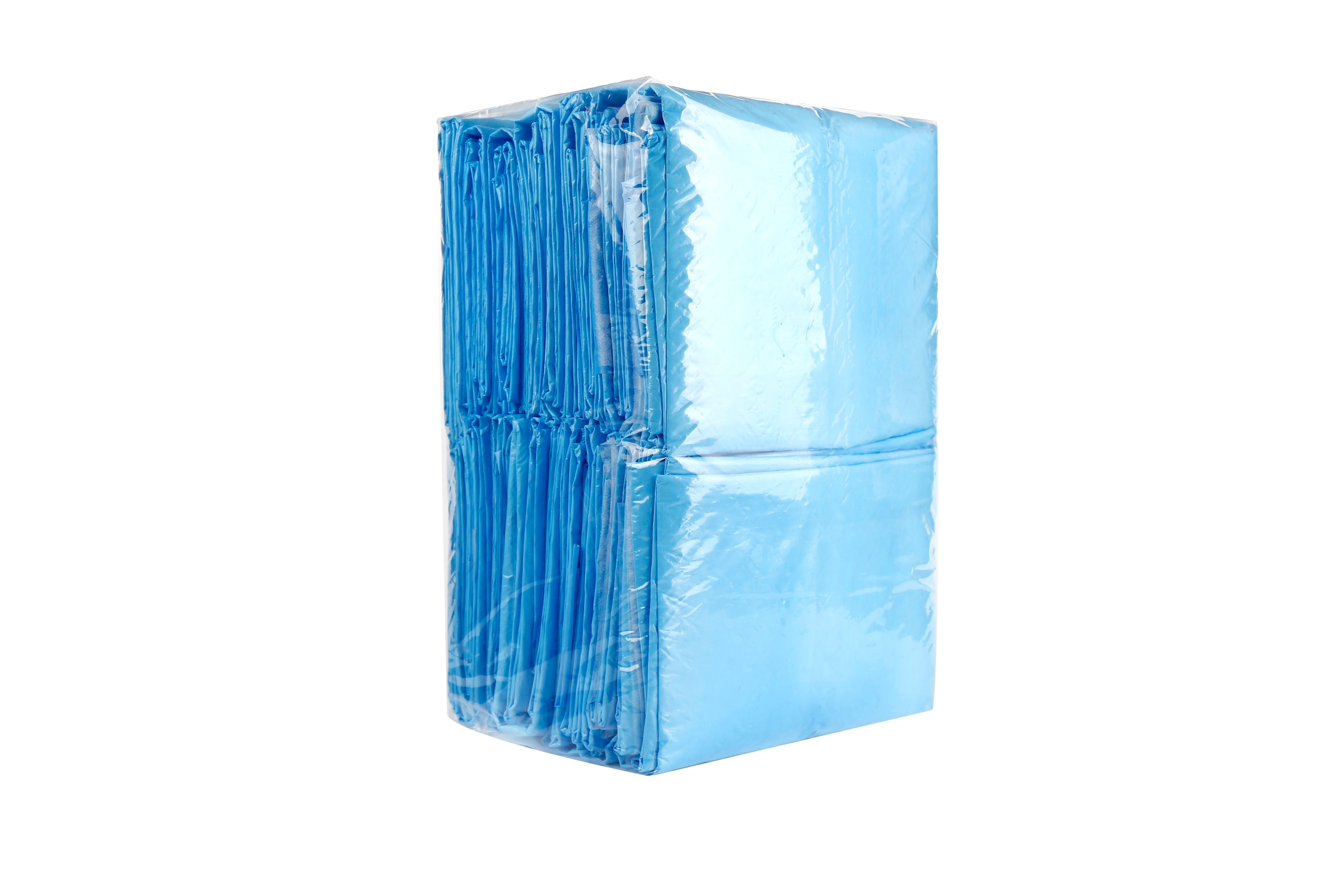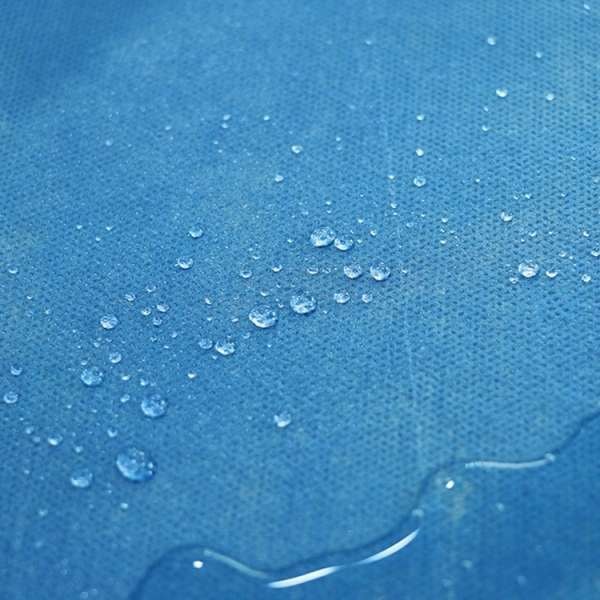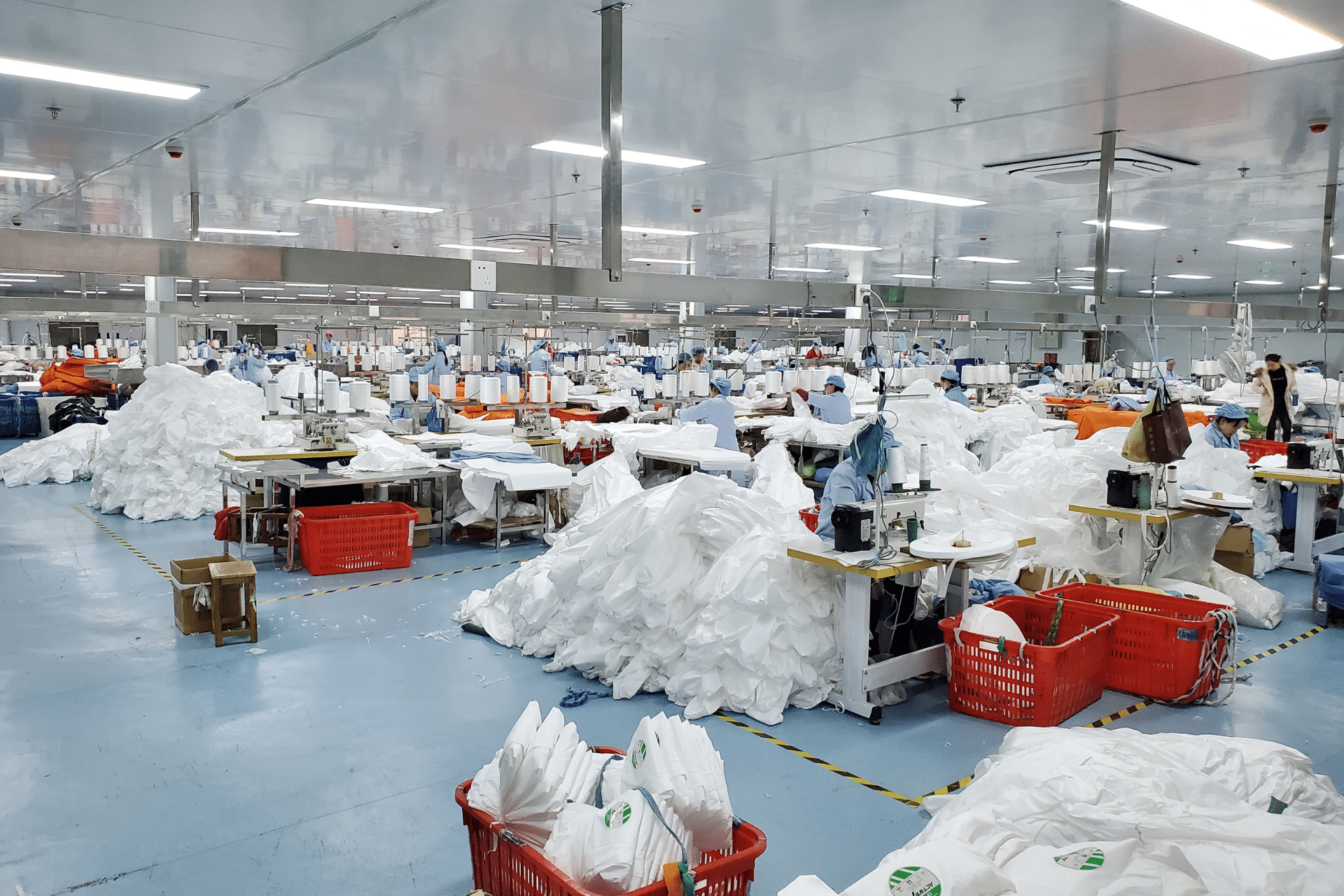Healthcare facilities like hospitals and nursing homes need to keep patients safe and clean. Disposable absorbent bed covers are a big help. These single-use bed covers are a type of disposable medical supplies. Many B2B buyers and procurement officers in medical centers and clinics are choosing them. This article tells you why. We will look at the key benefits for B2B buyers. It is important for long-term care facilities too. These absorbent bed pads are part of good patient care essentials. They are also known as disposable underpads.

Top 5 Reasons Healthcare Places Pick Disposable Bed Covers
There are good reasons why healthcare hygiene products like these are popular. These medical disposables benefits help everyone. B2B medical suppliers see a high demand.

- Stops Sickness: Infection Control and No Cross-Contamination
- Infection control is super important. These infection control solutions help.
- Each disposable bed cover is used once. Then it is thrown away.
- This stops bad germs, called pathogens, from spreading. This is cross-contamination prevention.
- It helps stop hospital infection rates from going up.
- This means fewer Healthcare-Associated Infections (HAIs). Old reusable linens can spread germs.
- Good hospital hygiene protocols include these disposable product advantages. This is key for patient safety products.
- Fluid containment solutions are built in.
- Saves Money: Healthcare Cost Reduction
- Using disposable absorbent bed covers can save money. This is a big part of healthcare cost management.
- Think about reusable vs disposable. Washing old covers costs a lot. You pay for water, soap, and power.
- You also pay people to do the hospital linen services.
- With disposable bedding benefits, you do not have these laundry costs.
- Bulk medical purchases and bulk purchasing discounts make them cheaper.
- This helps with healthcare cost reduction and managing healthcare budgets.
- The bedding cost per use is often lower. Cost-effective disposables are a smart choice.
- This leads to healthcare operational savings.
- Works Faster: Healthcare Operational Efficiency
- Nurses and helpers are very busy. Healthcare staff efficiency is important.
- These quick-change bed covers save time. It is fast to put on a new one.
- This helps with patient turnover efficiency. New patients can get a clean bed fast.
- Healthcare facility workflows become smoother.
- There are no hospital inventory management problems like with old linens.
- You don’t need much bedding supply storage for these.
- This means less hospital staff workload. This is a big part of the disposable product convenience.
- Follows Rules: Healthcare Compliance Standards
- Places that care for sick people must follow rules. These rules keep people safe.
- Disposable bed covers help meet these safety standards.
- They help with healthcare compliance standards for cleanliness.
- Medical facility sanitation is easier.
- It makes healthcare audits simpler. Using standard disposable product safety items is good.
- Many have medical product certifications. This shows bed cover performance and medical supply reliability.
- Keeps People Comfy: Patient Comfort and Dignity
- Patients need to be comfy. Patient comfort solutions are important.
- These covers have soft absorbent layer technology. Some use high-absorbency materials.
- They pull wetness away. This is moisture-wicking bed covers.
- This helps skin integrity and keeps skin safe. It helps with bed sore prevention and stops pressure ulcers.
- Some covers help with medical facility odor control. This helps patient dignity and dignity preservation.
- Good skin protection products are part of incontinence care products.
- This makes patient satisfaction metrics better. Hygienic patient bedding is a must.

New vs. Old Bed Covers: A Look at the Facts (Disposable vs Washable)
Let’s look at disposable vs washable covers. This helps hospital purchasing decisions.
- Money Talk (Cost per use analysis):
- Old covers seem cheap at first. But washing them adds up. You pay for water. You pay for power. You pay for soap. You pay for people to wash them.
- Disposable medical supplies save this money. One nursing home saved $1,200 each month. They stopped washing old pads. This shows good healthcare cost management.
- Medical procurement strategies should look at all costs.
- Cleanliness (Hygiene protocols):
- Disposable underpads are very clean. Each one is new.
- Studies show they lower sickness. Sickness in hospitals went down by 30% in one study.
- This is key for infection prevention products. It helps with cross-contamination prevention.
- Our Earth (Environmental impact):
- Washing old covers uses lots of water. It uses lots of power too. About 5 times more.
- Some disposable bed covers are made from non-woven materials. Some use polypropylene fabric.
- Some new ones are made to be better for the earth. This is about medical supply sustainability.
- Good healthcare waste management is important. Some medical waste reduction is possible.

What B2B Buyers Need to Look For
If you are a B2B buyer or procurement officer for medical facility supplies, here is what to check. These are healthcare purchasing criteria. Good vendor partnerships with medical supply distributors are key.
- Good Stuff (Material Quality and Absorbent medical textiles):
- Look for strong bedding material quality. Non-woven materials are good.
- SMS material (it stands for Spunbond Meltblown Spunbond) is strong. It stops leaks. This is fluid-resistant bedding.
- Polypropylene fabric is also used. These materials help with leakage prevention.
- The bed cover performance depends on these. Look for healthcare product durability.
- Soaks Up a Lot (Absorbent Core Technology and Medical grade absorbency):
- Covers need to soak up liquids. This is incontinence management.
- The absorbent core is important. It holds the liquid.
- Some patients need more help. Pick covers with the right absorbent pad capacity.
- Absorbent product layers and absorbent material types matter.
- Good covers have moisture barriers. Check for absorbent product testing.
- Safe Stamps (Product Certifications):
- Look for seals that say the product is safe. These are medical product certifications.
- This shows they meet healthcare compliance standards.
- This helps with healthcare risk management.
- Good Sellers (Medical supply reliability and Bulk order logistics):
- Buy from sellers you can trust. This is part of the hospital supply chain.
- Can they send big orders? This is bulk purchasing.
- Bulk bed cover pricing can save money.
- Good supply chain management means you always have patient care essentials.
- Medical inventory turnover and hospital inventory management are easier with reliable disposable supply chain.

You might consider Extra large disposable bed pads for patients needing more coverage. For general needs, disposable bedding and towels are essential healthcare facility supplies. If you need strong waterproof options, look into disposable plastic bed sheets waterproof](https://med-disposable.com/product/disposable-plastic-bed-sheets-waterproof/). For a high quality disposable non woven SMS bed cover, check specific product details.

Real Story: How New Covers Helped a Nursing Home
Let’s look at a real nursing home. They switched to disposable absorbent bed covers.
- Workers had 40% less work with beds. This helped healthcare staff efficiency.
- The home saved $1,200 each month on washing. This shows healthcare cost reduction.
- Fewer people got sick. Sickness dropped by 22% in six months. This is great for infection control.
- This also meant fewer bed sores or pressure ulcers. This is good patient safety.
This shows how disposable product advantages help healthcare facility management. These are important healthcare trends and medical purchasing trends.

Questions B2B Buyers Ask
Here are some common questions from B2B healthcare solutions buyers. These are healthcare buyer priorities.
- Q: Are new bed covers good for the Earth?
- A: Washing old covers uses lots of water. Many disposable bed covers use materials that can be recycled. Some new ones are made to break down. This is about medical supply sustainability and the environmental impact of disposable product innovation.
- Q: How much money can my place save?
- A: Think about how much you pay for washing. Add up soap, water, power, and worker time for hospital linen costs. Compare this to the cost-effective disposables. This is part of healthcare operational efficiency. The bedding cost per use for disposables benefits many medical facility budgets.
- Q: What sizes do they come in?
- A: They come in many absorbent bed cover sizes. There are common sizes for hospital bed protection. You can also get special sizes. Healthcare product selection is wide.

Last Words: Why New Covers Are a Smart Buy
To sum up, healthcare facilities like disposable absorbent bed covers for many reasons:
- They stop sickness. This is good infection control.
- They save money. This helps with healthcare cost reduction.
- They make work easier. This boosts operational efficiency.
- They keep patients comfy. This is good for patient dignity.
B2B buyers in medical centers, hospitals, clinics, and long-term care facilities should think about these key benefits. Choosing good quality disposable medical supplies from trusted medical distributors is smart. Focus on patient safety products and things that help with incontinence care products. This is a good choice for your medical facility supplies and your healthcare procurement process. Always consider disposable product reliability for your healthcare facility management.











